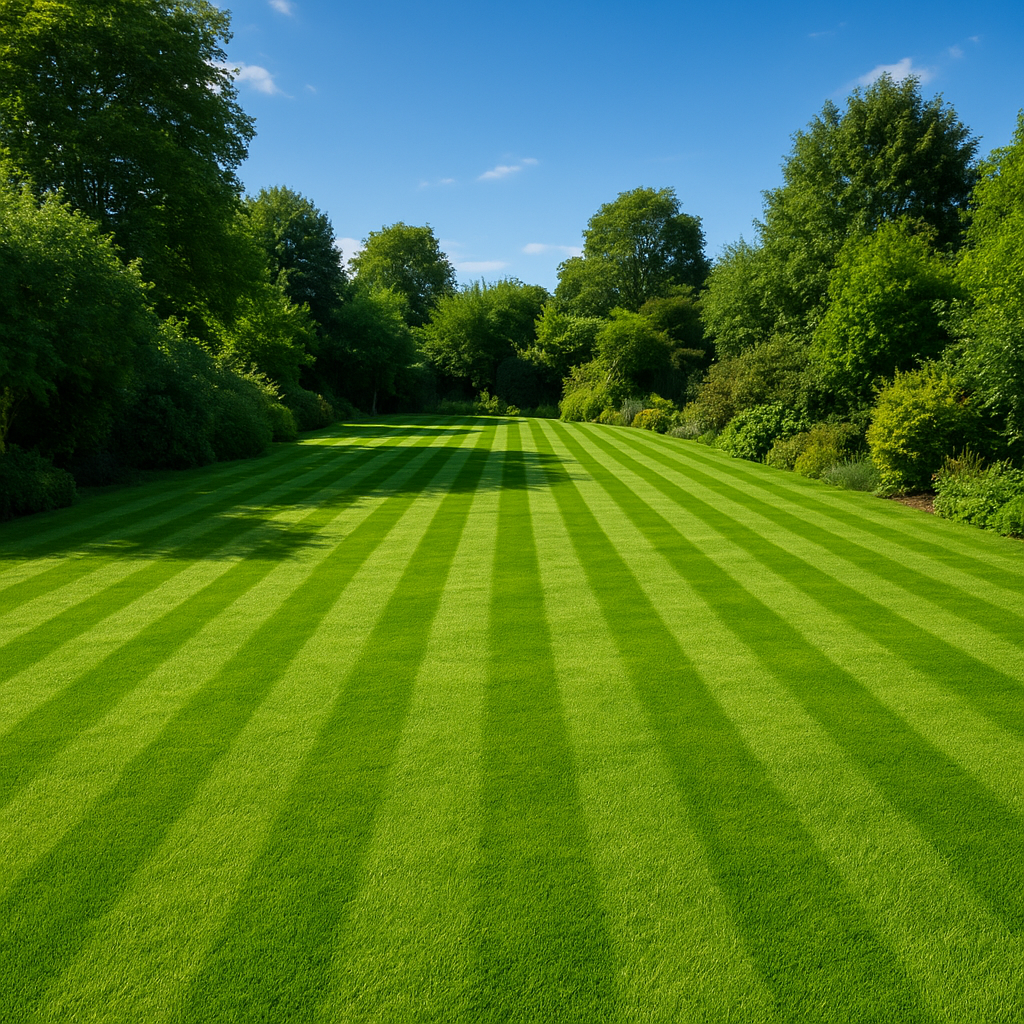- Lawn Turf
- Artificial
- Soil
- Timber
- Composite Decking
- Paving & Stone
Get In Touch With Our Experts Today!
Give us a Call! - Seed & Fertiliser
- Dressing
- Bark

October 03, 2025 TurfTurf AdviceTurf Tips
For many, a lush, green lawn is a key element in the perfect garden landscape. But with environmental awareness on the rise and everyone looking to save time and money wherever possible, is natural grass still a good option? There are many pros and cons regarding whether grass is good for the planet, and we’ve put those arguments forward in this article.
Grass, like other plants, helps purify the air we breathe. It naturally draws carbon dioxide from the air and converts it into oxygen. It also helps trap dust, capturing tiny molecules that float in the air, storing them in the ground, and helping us breathe dust-free air.
Turfed areas have fantastic cooling effects. Whereas bare soil, concrete and asphalt absorb the heat and make their surfaces hot to walk on, high temperatures don’t have the same impact on grass. In fact, your lawn can be 10-20 degrees cooler. Not only does this provide a safe spot for you and your pets to relax, but it also stops heat from reflecting into the atmosphere.
Areas with particularly sloped terrains will massively benefit from grass. Turf has a robust root system that anchors into the ground, not only keeping it in place but also improving soil structure by holding it together and preventing erosion. It can also help reduce topsoil being washed away during heavy rain, protecting nearby waterways from being polluted.
If there is too much hard landscaping, when we experience heavy rainfall, the water drains in one direction, potentially flooding its final destination and causing further problems. Healthy lawns (that have been installed correctly) can absorb large amounts of water deep into the ground. This helps protect your home from rising water and provides essential H20 to your turf and plants.
A healthy lawn supports a variety of insects and beneficial microorganisms. All of these contribute to soil health by breaking down organic matter that falls on the grass. Certain types of turf, like wild flower turf or clover turf, also encourage pollinators to visit your garden, helping them collect pollen and aiding in self-seeding to maintain the growth of your grass.
We all know how noisy cities and built-up areas can be. Sounds are amplified because they bounce off the hard landscaping of towns. Concrete structures, roads, and stone paths all reflect noise back into the atmosphere. Grass, on the other hand, absorbs excess sound, creating a softer, quieter atmosphere.
Just like sound, grass absorbs light, too. This is ideal for preventing reflective glare that can occur off smooth surfaces such as stone or concrete. It also helps reduce your home’s temperature, as light doesn’t reflect off your lawn onto your brick house, increasing its temperature.
Discover which turf is right for you and how to easily order your fresh turf online.
Lawns require a lot of water; it keeps their roots hydrated, resulting in brighter greens, thicker blades, and a healthier-looking lawn. During hot summers, lawns can struggle and sometimes require watering twice a day – a process that can be both costly and time-consuming.
If you notice your lawn struggles after a particularly hot or cold season or has succumbed to a nasty lawn disease, it may require chemicals to help revive it. Seasonal fertilisers can help your lawn look its best again, and some chemical-free, eco-friendly options are available for a cleaner alternative.
To get the most from your natural turf, a little TLC is required. From aerating and weeding to mowing and trimming, it involves a lot of manual labour, not to mention electrical power for keeping your turf trimmed.
A well-loved lawn is a great asset, but can also result in soil compaction due to the high levels of foot or pet traffic. Compacted soil prevents the roots from obtaining the essential vitamins they need, resulting in stressed grass. This can also affect water absorption, resulting in water pooling, soggy lawns, and potentially, dead grass.
Absolutely! Although there are factors to consider, grass lawns bring a lot of benefits. Not only does turf create that quintessential British garden appearance, but it also helps clean our air, improve our soil, and support the local ecosystem. What’s important is finding the right type of turf to match your soil, location, and the intended use of your lawn. This will help you determine whether a wild flower lawn, a shade-tolerant lawn, or no lawn at all is the best option for you.
If you’re unsure which type of turf is best suited to your landscaping project, get in touch with our turf specialists. We can answer all your turf-related queries and help you find the right landscaping solution.
For landscapers looking to provide high-quality turf to their clients and projects, be sure to join our Trade Account for additional benefits.